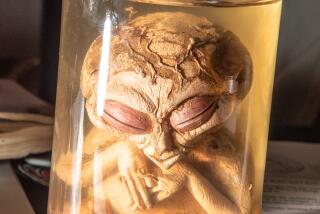Arguing the Need for the Sacred in a Scientific World
Just back from Las Vegas, I take this to be a most opportune moment to tackle Huston Smith’s analysis of the current standing of religion in our society, and of our need to rediscover its values. This being my first visit to the capital of simulated everything, it took a while before it dawned on me that Las Vegas is us: money, dazzling technology placed at the service of glitzy, unblushing hucksterism, a thousand artfully constructed, interchangeable realities, all our society’s debased values dangled alluringly before our eyes.
No wonder Smith, an internationally acclaimed historian and scholar of world religions, is worried about our future. Disparaging of “the worldview into which we have unwittingly wandered”--one dominated by an implicit belief in science and the worship of technology that it has spawned--he asks whether “we would not be better off with a worldview that shows us deeply connected to the nature of things.” Science, he insists, has produced nothing in the way of objective facts that disprove traditional metaphysical reality, while the traditional religious worldview is inclusive enough to embrace everything science has to teach us. “Modernity’s gold--i.e., science,” he argues, “ . . . is certain to figure importantly in the third millennium, and postmodernity’s focus on [social] justice stands a good chance of continuing. It is the traditional worldview that is in jeopardy and must be rehabilitated if it is to survive.”
The first half of Smith’s book is devoted to an examination of our current plight, for which he appropriates the central metaphor from William Gass’ 1995 novel “The Tunnel.”
The floor of the tunnel--its support system, as he sees it--is scientism, the largely unchallenged contemporary belief “first, that science is our best window onto the world and, second, that matter is the foundation of everything that exists.” Its supporting walls, whose bricks and mortar are again the stuff of scientism, are the supposedly enlightened forms of rational liberalism of higher education and the law, and its protective roof is the collaborationist media. These are the powerful forces that conspire to imprison us in our tunnel vision, a bleak place in which religion is marginalized and the human spirit stultified.
Smith devotes the second half of his treatise to the rehabilitation he deems necessary: “Our exiting the tunnel,” he writes of our predicament, “requires that science share the knowledge project equitably with other ways of knowing--notably [in this book] the ways of God-seekers.”
Arguing that the values of the scientific worldview are limited to a localized understanding of the physical universe, he pleads a case for the Big Picture of traditional, hierarchical worldviews, where this-world existence is understood only in the context and embrace of other-world consciousness, and where “other” signifies not only a difference in quality, but also a superiority to the material realm that our bodies inhabit.
Philosophers of the scientific mode “assume that the more derives from the less,” he writes; “traditionalists assume the opposite”--that the less derives from the more. He adds that the “wholeness with which traditionalists begin is God.”
“The sacred world,” he writes, “is the truer, more veridical world, in part because it includes the mundane world. And in the act of including it, it redeems that world by situating it in a context that is meaningful throughout.”
The problem, of course, is how to find our way back to the sacred, from which we in the Western world have been distancing ourselves for centuries. Here, the logic of Smith’s argument gives way to the inevitable leap of faith: Given the evidence of millenniums of human apprehension of another, sacred plane of existence beyond our own, from the aborigines’ dreamworld to the great world religions, why would we not choose the traditionalist option?
Citing the failure of science to account for the big questions surrounding our existence and the continuing evidence of a spiritual longing in the human soul, Smith argues passionately for a re-integration of our understanding that weighs the beliefs of theists and the vision of mystics equally with the insights of scientists, in an inclusive brotherhood of human thought.
Smith’s love of spirited debate makes this an intellectually exciting book, as accessible to the layman as to the scholar. His familiarity with a vast range of sources of scientific, philosophical and religious writing allows him to engage the best of human minds, sometimes in disagreement, sometimes gently scolding, always with a genuine delight in the quality of thought and argument. Those who have enjoyed his lively appearances on public television shows will find that spirit of passionate intellectual curiosity present in this book.
More to Read
Sign up for our Book Club newsletter
Get the latest news, events and more from the Los Angeles Times Book Club, and help us get L.A. reading and talking.
You may occasionally receive promotional content from the Los Angeles Times.






